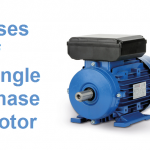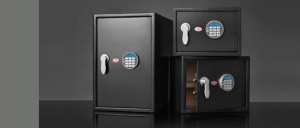Brake Vacuum Pump Overview in Detail
Brake vacuum pumps are cardinal components of motor-driven vehicles, especially cars comprising petrol engines. They improve an engine’s overall fuel consumption rate and boost braking assistance. With these quality powerhouses installed in your car, braking not only becomes facile, but you can even stop the car swiftly during emergency scenarios with ease and grace!
Albeit, with the passage of time, a brake vacuum pump replacement beckons when you opt for upgrading the motor or the brakes in your car. From a safety point of view, it is deemed imperative to periodically get them changed. Replacing these handy pumps is much possible even if you’d want to do the honors on your own rather than paying service charges to the ‘treacherous’ dealership aka money sharks.
What is the Exact Process of Replacing a Brake Vacuum Pumps
Here are 5 essential ways that will guide you through the process of replacing a brake vacuum pump-:
Tip No. 1 – Become Familiar
First off, whip out your old dusty car manual from the attic (pun intended) so as to get a proper insight into where all the parts are situated. Be careful and glance close enough at the components you will be specifically working with just to get the hang of what’s actually needed to be DONE! Now, access the car’s brake vacuum pump and check the components around it to make sure that they are all spic and span & in top-notch shape.
Tip No. 2 – Remove the Old Pump
Take off the brake lines from the master cylinder and then safely eject both of the nuts that are connecting it simultaneously along with the vacuum hose. One by one, take off each component, albeit with extra care and finesse by either marking down on a piece of paper or memorizing where each of them needs to be placed whilst you are piecing everything together. Now then, eject the actual master cylinder and proceed to disconnect the brake pedal before finally getting rid of that old rusty and ‘heroic’ vacuum pump.
Tip No. 3 – Install New Brake Vacuum Pump
With the ‘veteran’ pump out of the way, you can clean out the area with a nifty rag and then begin installing everything in reverse order. For this, you ought to hook up the vacuum pump and then connect the master cylinder and brake pedal. Don’t forget to clean up these parts too as you slug it out in there. Once you are through with the cleaning nuances, attach the vacuum hose and the two nuts that have been holding it together all along. Lastly, re-attach the brake lines to the master cylinder.
Tip No. 4 – Bleed Brake Lines
After you have accomplished putting back together everything in order, and are pretty sure of the placement, you will want to bleed the brake lines. Run a quick test to make sure that everything is working efficiently. Insofar as the testing is concerned, ensure that it’s done in a fairly private, residential area that is not lousy just to discern any lags. For instance, you may pursue the testing process in the driveway at a slow speed to gauge anything amiss.
Tip No. 5 – Seek Professional Help
Although brake vacuum pump replacement can be a breeze, but if at any point in time you get a harrowing feeling as though a problem might seep in or things may go awry, immediately stop what you are doing and contact a PROFESSIONAL! After all, some problems are better dealt with by an expert with more experience.









Average Rating